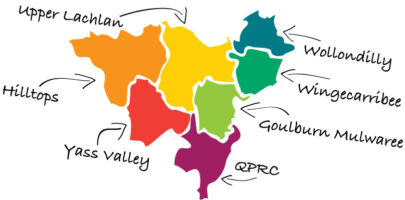GUNNING RAILWAY STATION by Dr Rowan Day Historian, OCP Architects
Gunning Railway Station is significant not only in itself as a railway site, but as an integral component of Gunning and its story as a community. The region was originally inhabited by Ngunnawal to the south and Gundungurra to the north, with their rock paintings, middens and artefacts found throughout the region.
The town’s name appears to have been derived from the Indigenous name for the area which was Gonnong or Gunnong, and was later written as Gunning.
In the 1820s the Lachlan River near Gunning was decreed the limit of settlement, beyond which settlers were not permitted to acquire or lease land, although this was often ignored and before long about half the colony‘s sheep grazed beyond the official boundary. The first known squatter in the region was Hamilton Hume, and his brother John Kennedy Hume established a 6000-acre station, later called Collingwood, on the Fish River near Gunning. From here the famous Hume and Hovell overland expedition to Port Phillip Bay set off in 1824.
The village of Gunning was first surveyed in 1829 at which time it had less than a handful of buildings, and again in 1836. One of the most dramatic episodes in the community‘s history was what was known as ‗the Siege of Gunning‘ in January 1840, during which John Hume was shot and killed by bushrangers from the Whitton gang. Thomas Whitton was captured a few days later and was hanged at Goulburn gaol (Ref. A Snapshot of Gunning‘s History‘. Upper Lachlan Shire Council ‗Bypassed but now thriving, Gunning celebrates 200 years, The Canberra Times, March 2021).
The presence of the Hume family in the area encouraged attention from further afield, particularly those looking for grazing land. While there was a brief gold frenzy in the district in 1851, wool has always represented its economic lifeblood.
It is famous as a district producing some of the world‘s highest quality Merino clips. Gunning Railway Station assisted in the transportation of local wool produce, and in 1924 a wool loading dump was installed at the station. The transportation of wool was indeed one of the chief motivations for the expansion of the railways in NSW, with colonial authorities fearing wool from the Riverina and western NSW would be diverted to Victoria rather than Sydney, via river transportation to the Victorian railway at Echuca on the Murray River. And this was particularly important for Gunning as a pre-eminent wool producing district. As the Goulburn Herald and Chronicle reported at the time of the opening (Ref: Opening of the Railway to Gunning‘, Goulburn Herald and Chronicle 3 November 1875, p. 2).
Since 1875, Gunning Railway Station has acted as an important transport link for the community of Gunning. Approximately 200 railway construction workers – ‗navvies‘ – were involved in construction of the line to Gunning. A number of dignitaries and locals attended the opening, with a special train arriving from Sydney, however there was ―a very strong wind, almost a hurricane, blowing throughout the day, thus quite spoiling anything like pleasure in connexion with the day‘s proceedings.‖ (Ref: Opening of the Railway to Gunning‘, Goulburn Herald and Chronicle 3 November 1875, p. 2). For a year the station represented the terminus of the line, subsequently becoming a stopover on the line stretching further south from Sydney, and ultimately connecting to the Victorian network.
This theme of transport is central to the story of Gunning, the community having also been an early Cobb & Co stop, and until 1995 being on the route of the old Hume Highway.
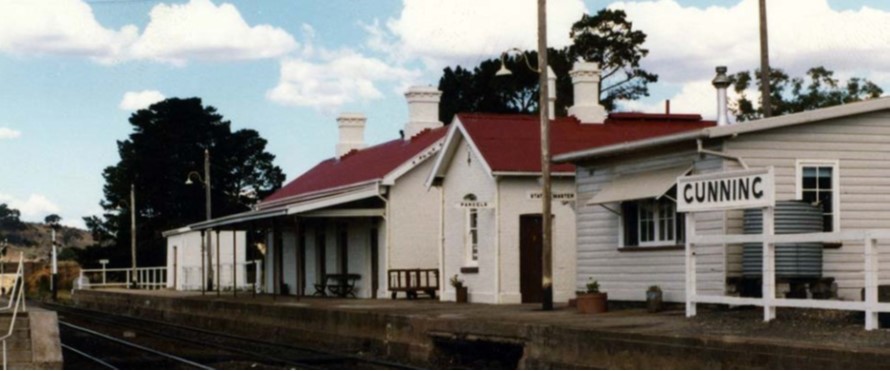
Gunning Railway Station, c.1980s.
Source: Australian Railway Historical Society.

Ref: Opening of the Railway to Gunning‘,
Goulburn Herald and Chronicle 3 November 1875, p. 2
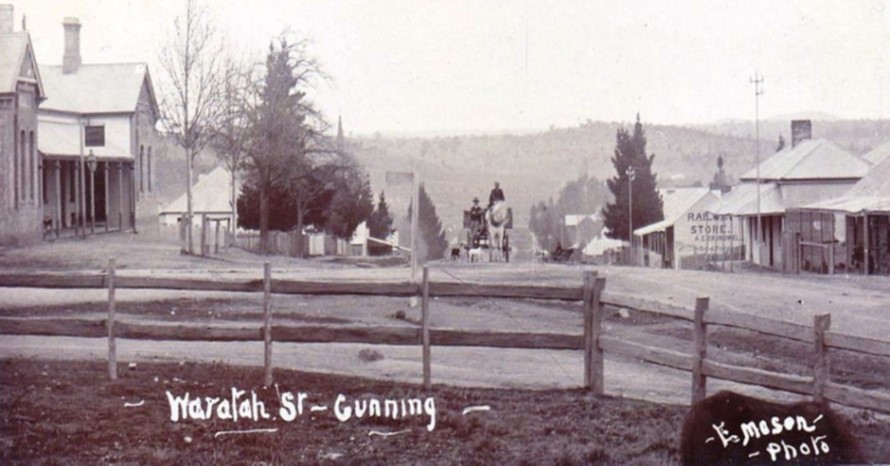
Waratah (now Warrataw) Street Gunning, early 20th century.
Note Railway Store on right (run by A.E. Crundwell). On left is the Frankfield Hotel.
Source: Gunning & District Historical Society.
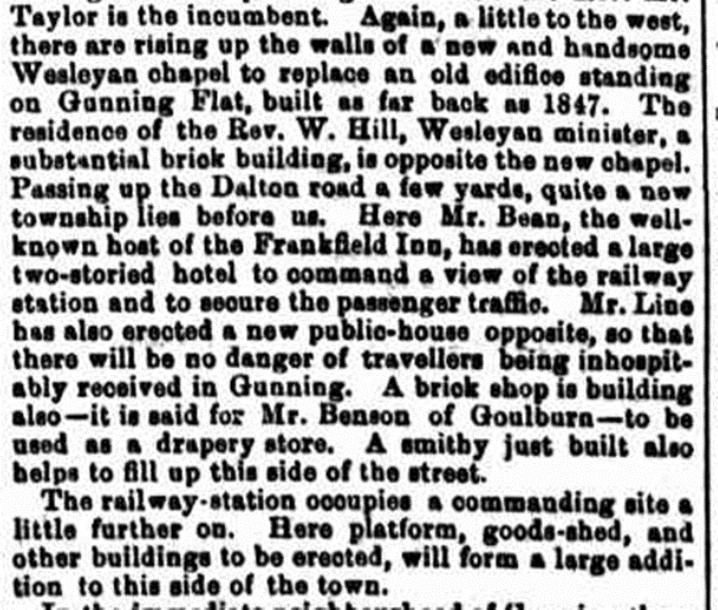
Ref: Robert Taaffe ‗Signal Boxes of NSW Railways and Tramways‘, Volume 3, p. 109)
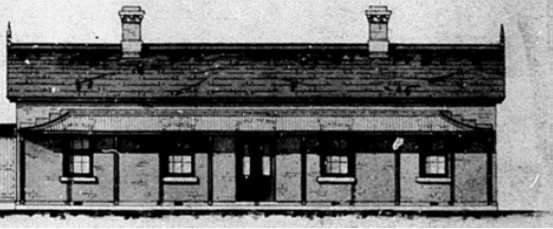
Original contract drawing (top right) showing verandah awning to the streetside elevation,
not currently on the station.
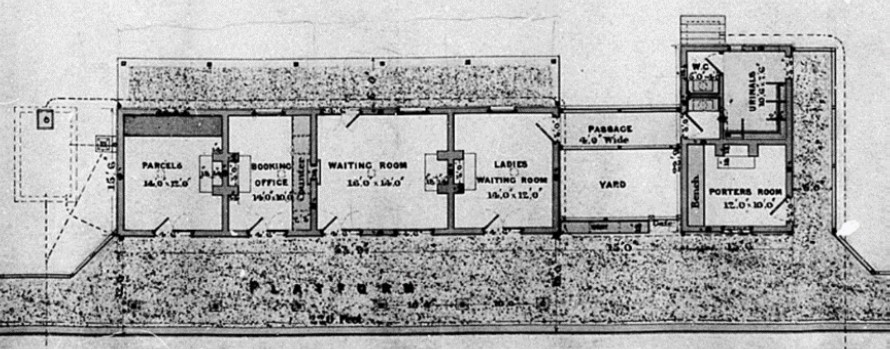
Original floor plans for Railway Station.
Over time the town centre has evolved away from the station, clustering around Yass Street (the former Hume Highway). However in the late nineteenth and early twentieth century, there was a greater degree of commercial and public activity nearer the station. This included the former Frankfield Hotel near (now a private residence) which serviced and provided accommodation to travellers, and the nearby Railway Store, while the Station Master‘s Residence was part of this orbit.
Gunning is one of the best surviving examples of a mid to late Victorian country station complex, featuring buildings from the arrival of the line in 1875, as well as from duplication of the line in 1915. The site also reveals the importance placed on railway development in country NSW in the late 19th century, as evidenced by the scale of the extant main station building.
The Station had some unusual features. The building was the first application of what became a distinctive design approved by the ‗father of the NSW railways‘ John Whitton. There is speculation that Whitton sat on the contract for construction so that works would not be completed at the opening of the line. This was supposedly in order to transfer any further expenditure on unfinished station items to the budget of the Railway Commissioner, to save money and make his own financial position look better. Whitton also introduced a two storey detached Station Master‘s Residence, which at the time was quite rare with combined offices/residences cheaper and more common.
As an example of a mid to late Victorian country station complex, Gunning Railway Station features has featured typical examples of railway technology, with some peculiarities in addition. The Signal Box dates to c.1914, with duplication of the line bringing more complex signalling requirements, however an interlocking machine was provided in 1890, and it is believed the levers were not covered (Ref: Robert Taaffe ‗Signal Boxes of NSW Railways and Tramways‘, Volume 3, p. 109)
A closing lever was installed in 1958. The signal box was decommissioned in 1996, and its equipment has been removed. A water pump remains at the north-eastern end of the main Station Building. The corresponding underground rainwater tank is unusual in that it is oblong-shaped, whereas typically such underground tanks on the NSW rail network were circular. A jib crane and remnants of a goods shed still remain in the railway yard.
Under this theme might also be explained the original purpose and function of existing buildings and rooms. This can be seen for instance in the original floor plan below, showing for example a Ladies‘ Waiting Room separate to the main Waiting Room; showing the kitchenette (R2) originally functioned as a Porters‘ Room. There would be the opportunity to showcase before and after‘ photographs to illustrate repaired / reinstated items including the entry awning and elements of the passageway. Within the Signal Box, devices such as replica wall mounted diagram, or photographs of historic signalling equipment.
Gunning station group is one of the best surviving examples of a small late Victorian country station complex with elements from the opening of the line in 1875 (when it was terminus for a year) through to 1913 when the last building on the site was added. It clearly demonstrates the changes from single track to double track operation in 1915 with addition of a second platform and more complex signalling arrangements. It exhibits a confidence in railway building and its importance in the development of the country by the scale of the buildings, particularly the station masters residence. It presents as a reasonably intact site with all of the major elements still evident. The original station building was an early proto-type of standardised design in station buildings.
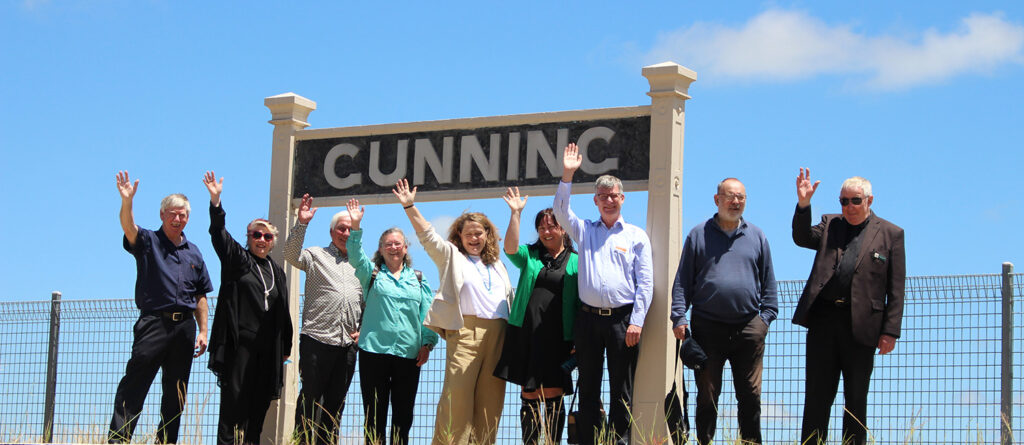
A printed version of this information was distributed at a community consultation workshop 1st June 2021 at Gunning Station.
STA MEMBERSHIP
free & connects you to the STA universe
Reach out to us
[email protected]
0427 938 110
Or by appointment at one of our
Mobile Office locations
PO Box 1323 Goulburn 2580
ABN 67 208 214 681
We acknowledge Aboriginal people as the traditional custodians of the lands where we create, live & work.
© Southern Tablelands Arts. All Rights Reserved


